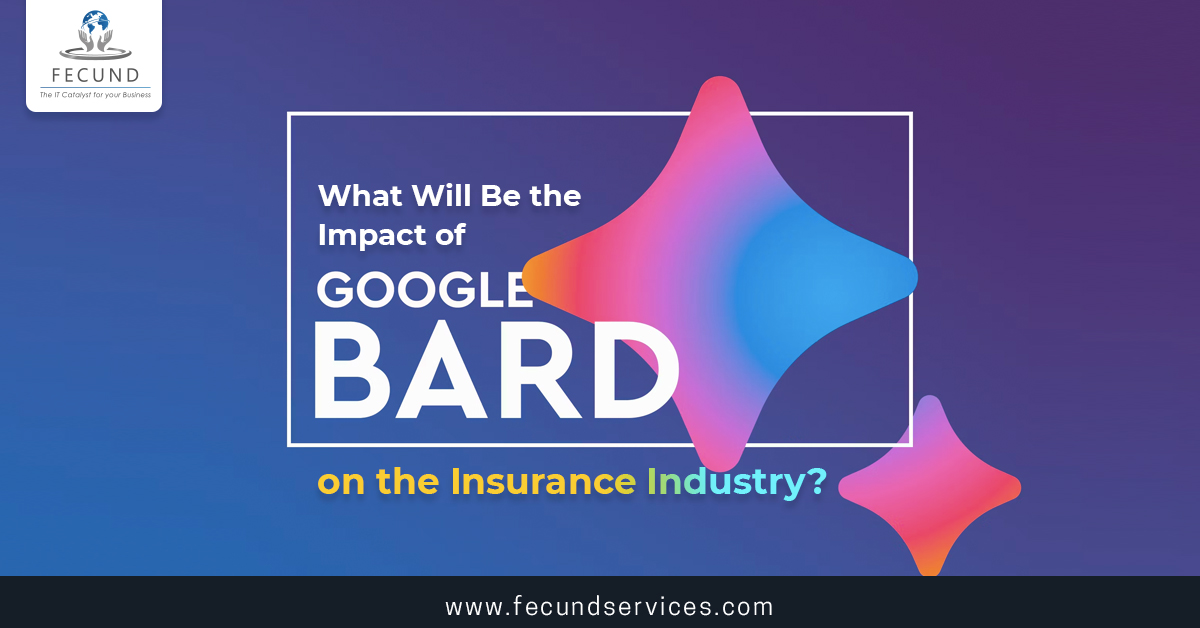
As experts in the insurance industry, we are always on the lookout for the latest advancements and changes that can have a significant impact on our sector. One such development that has been making waves recently is Google BARD. In this article, we will delve into the depths of what Google BARD is, how it works, and most importantly, what its potential impact could be on the insurance industry.
Understanding Google BARD
Before we delve into the implications, let us first understand what Google BARD stands for and its core concept. BARD stands for “Biometric Analysis and Risk Detection.” It is a cutting-edge technology developed by Google that utilizes advanced artificial intelligence and machine learning algorithms to analyze biometric data for risk assessment.
The technology behind Google BARD involves the extraction of biometric information from various sources, such as wearables, smartphones, and other IoT devices. This data includes heart rate, blood pressure, sleep patterns, physical activity, and much more. The machine learning algorithms then process this information to assess an individual’s health and lifestyle patterns, allowing for personalized risk analysis.
Potential Benefits for Insurance Industry
The introduction of Google BARD has the potential to revolutionize the insurance industry in several ways. Let’s explore some of the significant benefits it could offer:
- Enhanced Risk Assessment
With Google BARD’s biometric analysis, insurance companies can now move beyond traditional risk assessment models that rely heavily on historical data and statistical analysis. Instead, insurers can leverage real-time and personalized data to understand their customers’ health and lifestyle habits accurately. This allows them to offer tailor-made insurance policies with premiums that truly reflect an individual’s risk profile.
- Improved Underwriting Process
Traditionally, the underwriting process has been time-consuming and required extensive paperwork. Google BARD’s integration into the insurance industry can automate and streamline this process significantly. By analyzing biometric data, underwriters can gain valuable insights into potential risks associated with a customer. This streamlining of underwriting not only benefits the insurers in terms of efficiency but also offers a smoother experience for policyholders.
- Preventive Healthcare Incentives
Google BARD’s ability to monitor and analyze an individual’s health data can promote preventive healthcare practices. Insurance companies can encourage policyholders to adopt healthier lifestyles through personalized incentives and rewards. This proactive approach may lead to a decrease in insurance claims, benefitting both the insured and the insurers in the long run.
- Fraud Detection and Prevention
Insurance fraud has been a persistent challenge for the industry. Google BARD’s sophisticated analysis can aid in detecting and preventing fraudulent claims. By cross-referencing biometric data with claims information, insurers can identify inconsistencies and red flags, reducing fraudulent activities and saving costs.
- Competitive Advantage
Early adoption of Google BARD technology could give insurance companies a significant competitive advantage. Those insurers who embrace this advanced risk assessment tool can offer innovative policies and pricing models, attracting a new segment of tech-savvy customers who seek personalized and data-driven insurance solutions.
Challenges and Concerns
While the potential benefits of Google BARD are evident, it’s crucial to address the challenges and concerns that may arise with its implementation:
- Data Privacy and Security
The use of biometric data raises concerns about privacy and security. Insurance companies must ensure robust data protection measures to safeguard their customers’ sensitive information. Transparency in data usage and compliance with relevant regulations will be essential to gain customers’ trust.
- Data Accuracy and Reliability
The accuracy and reliability of biometric data can impact the effectiveness of Google BARD’s risk analysis. Ensuring that the data collected from various sources is consistent and precise will be a critical factor in leveraging this technology successfully.
- Equity and Accessibility
Insurance companies must be mindful of any potential bias that could arise from biometric data analysis. Ensuring that the technology is fair and accessible to all customers, regardless of their demographic background, will be essential.
Conclusion
In conclusion, the introduction of Google BARD in the insurance industry has the potential to be a game-changer. With its biometric analysis capabilities, this technology can enhance risk assessment, streamline the underwriting process, promote preventive healthcare, and mitigate insurance fraud. However, it is crucial for insurers to address concerns regarding data privacy, accuracy, and equitable usage.
As the insurance landscape evolves, staying at the forefront of technological advancements like Google BARD will enable companies to provide innovative, customer-centric solutions. Embracing this transformative technology can indeed give insurance companies a competitive edge in an ever-evolving digital era.
 Author Bio: Abhishek Peter is an Assistant Manager – Digital Marketing at FECUND Software Services. With a Master’s degree in Marketing and various certifications in the field, he is highly skilled and passionate about solving complex problems through innovative marketing solutions. Abhishek is an avid reader and loves to explore new technologies. He shares his expertise through his blog, which provides insights into the world of marketing, technology and more. LinkedIn Profile
Author Bio: Abhishek Peter is an Assistant Manager – Digital Marketing at FECUND Software Services. With a Master’s degree in Marketing and various certifications in the field, he is highly skilled and passionate about solving complex problems through innovative marketing solutions. Abhishek is an avid reader and loves to explore new technologies. He shares his expertise through his blog, which provides insights into the world of marketing, technology and more. LinkedIn Profile




Post a comment